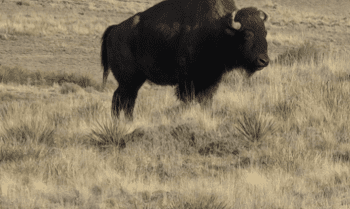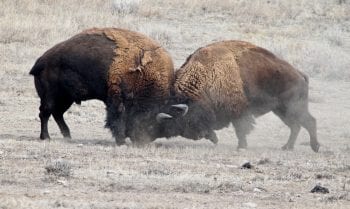December 31, 2019
Showdown on the Prairie
How Denver Zoo Builds the Next Generation of Conservation Heroes
High noon on the prairie. Our heroes are arriving by the busload. When the dust settles, there are 50 teens and tweens milling around, wearing sweatshirts and jeans, pocketing smart phones. This is a showdown and they’re here to save the day.
Across the American West, grasslands are struggling and so are the wildlife and people who depend on them. Crop yields are becoming more unpredictable, cattle herds are thinning, water sources are drying up and native flora and fauna are disappearing as new, invasive species make themselves at home. Unchecked, all these changes could eventually render this region unrecognizable—empty of its iconic plants, animals, ranches, farms, and rural communities.
That’s why Denver Zoo invited these middle school students to the Rio Mora National Wildlife Refuge in northeast New Mexico this Fall. We set up this showdown—it’s a STEM Showdown. STEM stands for Science, Technology, Engineering, and Math, and our showdown brings these classroom subjects to life.
Side-by-side with scientists from Denver Zoo, the United States Fish & Wildlife Service (USFWS), New Mexico Highlands University (NMHU), and other partners, the students set out exploring everything from the composition of the refuge’s soil and the kinds of organisms living in bison dung to the quality of water and the variety of fish in the Mora River.
These are no idle pursuits. Each project contributes to actual scientific efforts to conserve at-risk species, restore grassland health, and ensure downstream communities have plentiful water for drinking and irrigation. These students are really learning about natural systems and what it takes to restore and strengthen an ecosystem against a range of threats—from climate change to unsustainable management.
Rio Mora National Wildlife Refuge was once a cattle ranch, modified in ways that caused long-lasting changes to the ecosystem, leaving it vulnerable to variations in precipitation and temperature. It’s a lot like the rest of northern New Mexico and parts of Colorado where land-based economies face increasingly uncertain prospects. Many of our students come from families already feeling the strain.
But what they see at Rio Mora is an alternative future—the ways our careful interventions have helped make the most of every rainfall, revitalized dying prairie, clarified the streams, and restored habitats for native wildlife. They see how the bison herd we co-manage with the Pueblo of Pojoaque supports the landscape’s recovery, rather than damaging it.
It’s a work in progress, but that’s part of the lesson, too. This is a long-term effort and we need someone to take up the torch.
As part of the Showdown, students get to ask experts candid questions about careers in science and conservation, and they can talk with NMHU undergraduates about college life. We also host a STEM Showdown for high schoolers, and during those sessions, we give students information about scholarships, internships, and other resources to help them take the next step.
All of this is designed to show how realistic getting a job in a STEM field can be. Combined with the thrill of their hands-on experience and the natural charm of the refuge, students get a dose of the inspiration that motivated our own staff to pursue careers in conservation.
By the end of the week, more than 200 middle school students in all have had the chance to fall in love with Rio Mora, figure out what their textbooks can’t tell them, and try their hands at something new and important.
The idea is that our young protagonists might eventually save more than just the day—the fate of the prairie rests in their hands.
Subscribe
Be among the first to hear the latest animal updates, important stories and details about all the fun happening around Denver Zoo.
Tags
-
 February 19, 2019
February 19, 2019Denver Zoo Donates Three Bison to Southern Plains Land Trust
The bison will spend their time roaming an 18,000-acre ranch where they’ll help restore the ecosystem in Southeast Colorado…
-
 November 16, 2018
November 16, 2018Celebrating Bison
Learn Why Bison Are So Important to Denver Zoo and Colorado In the mid-1800s there were an estimated 30…

